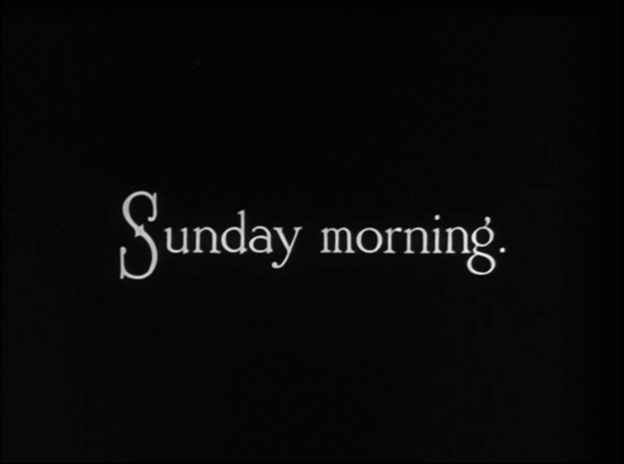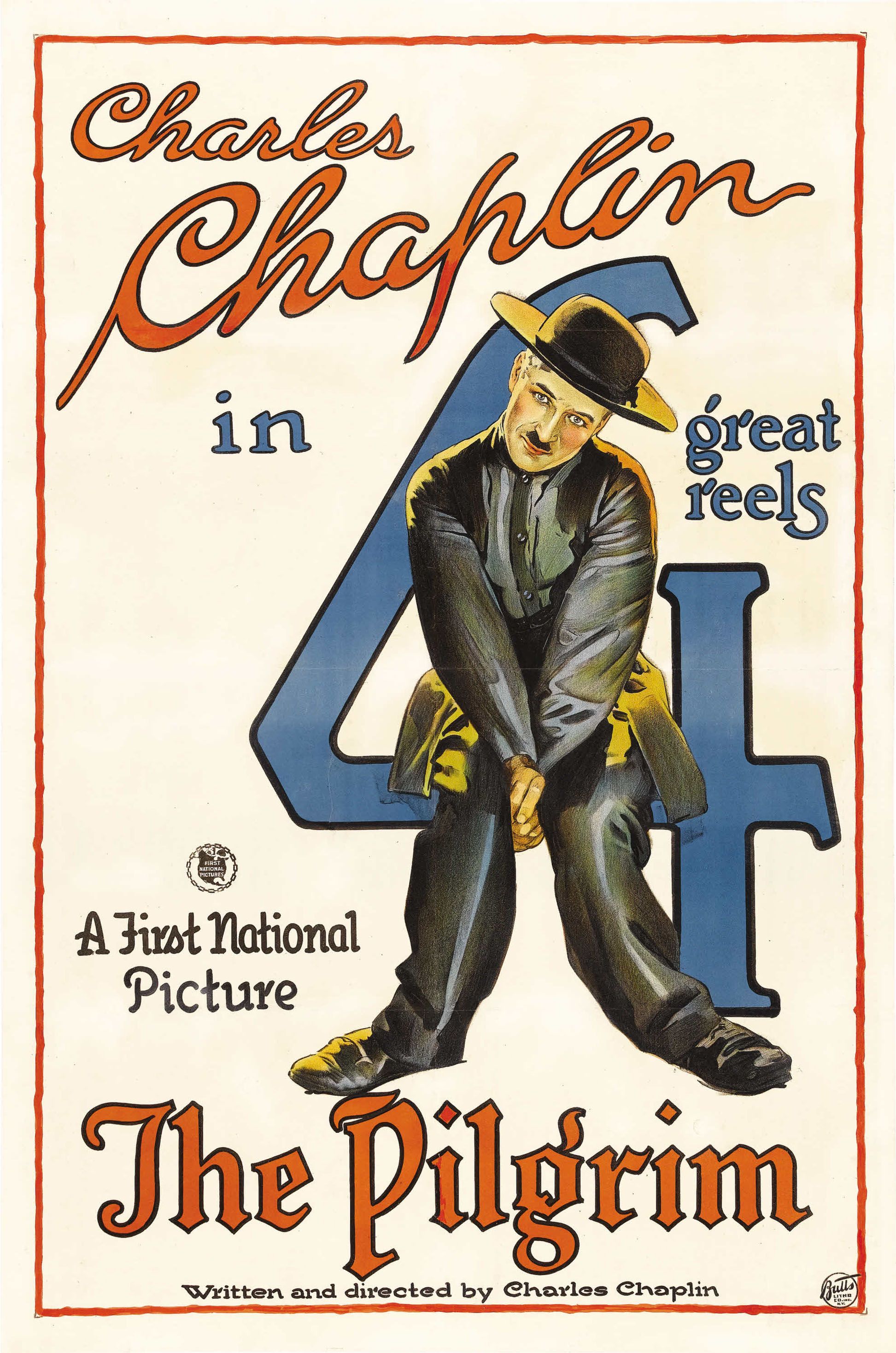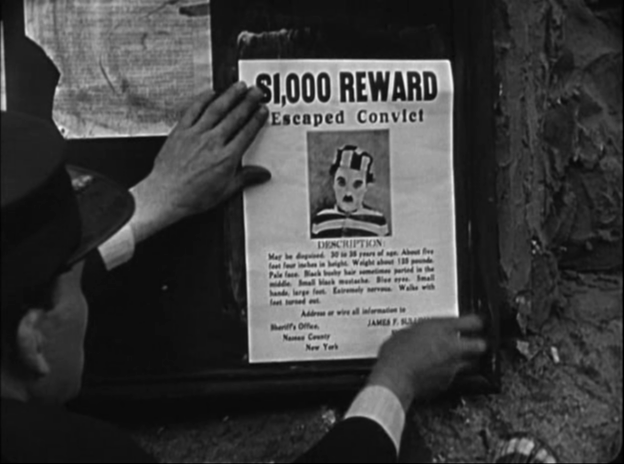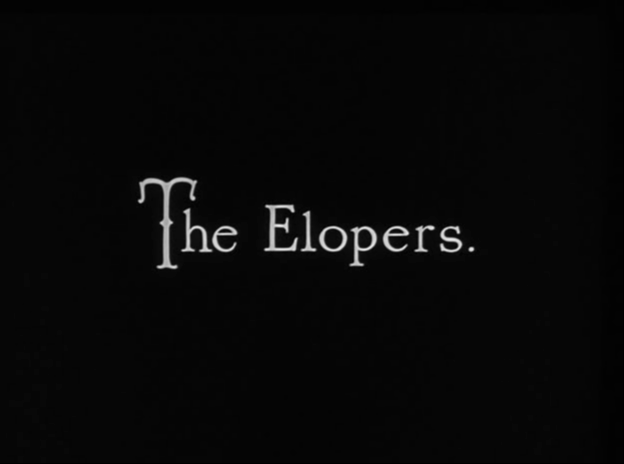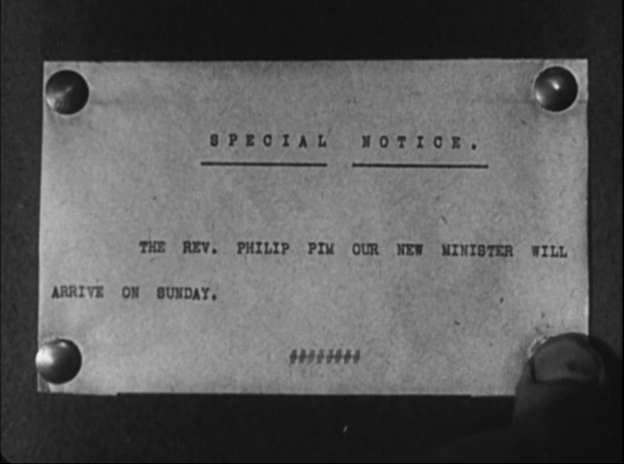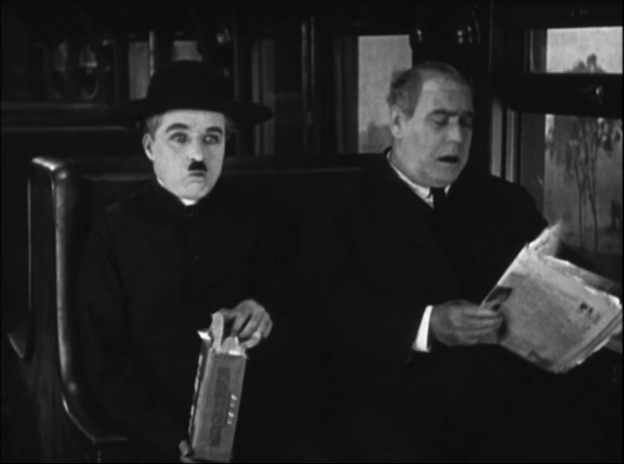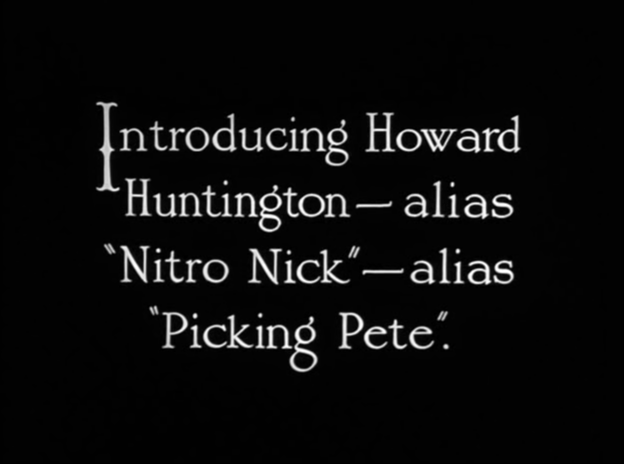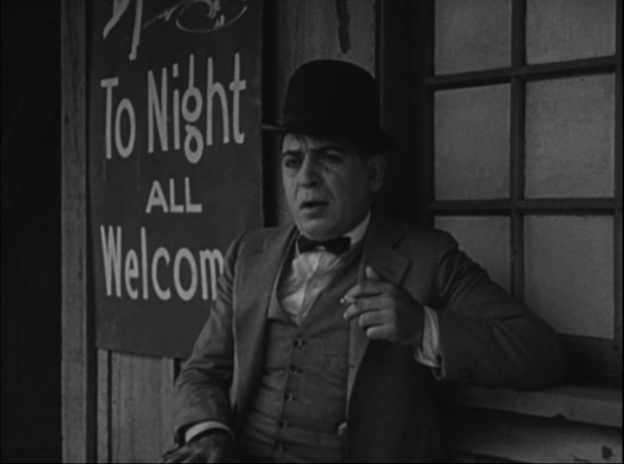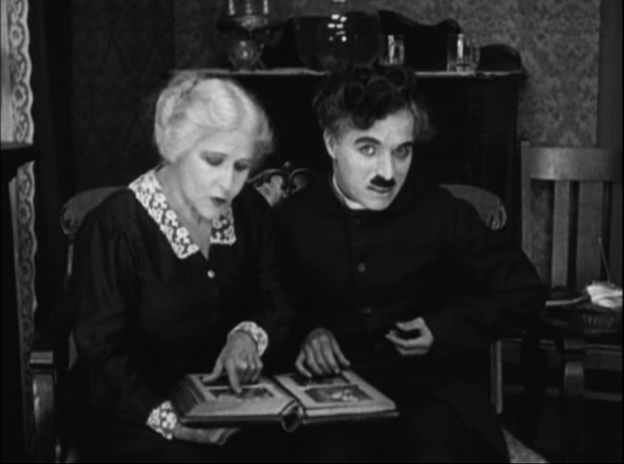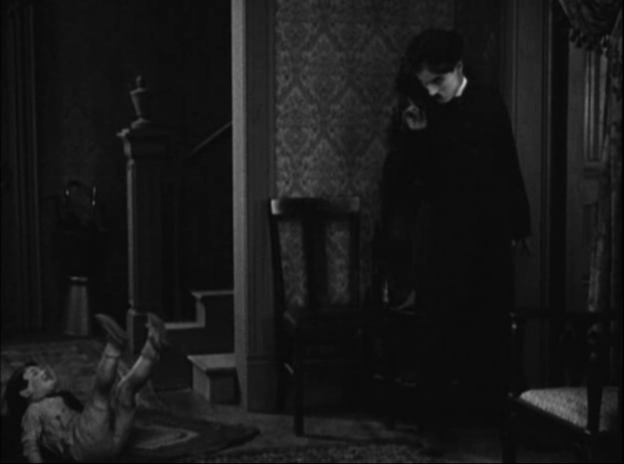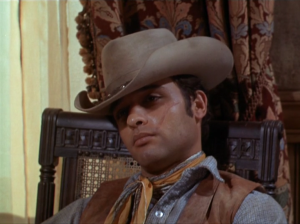THE PILGRIM, continued.

As noted, some cute business with Charlie helping Edna in the kitchen, especially the rolling pin on the top shelf that keeps falling on him. This is mildly amusing, but provokes an additional gasp when it imperils Edna. Charlie has thought himself clever by placing a milk bottle in front of the rolling pin to stop it trundling off, but then Edna reaches for the bottle…
Charlie is long past actually doing crude violence to his leading ladies for the sake of a laugh — gone are the days when Mabel Normand took a kick in the skirts. But he can still good-naturedly THREATEN to have some accident befall a lady, so long as disaster is averted.
Meanwhile, little Dinky Riesner has placed Sydney Chaplin’s hat over the similar-looking cake Edna has baked, and Charlie proceeds to decorate it with chocolate and cream and cherries. This is all probably too elaborate a scheme for Dinky to come up with, and he’s not even going to be present for the pay-off. Charlie gently kicks the lad from the room, and we can still see from the mite’s expression that this is a hilarious game and he’s not being hurt by it.
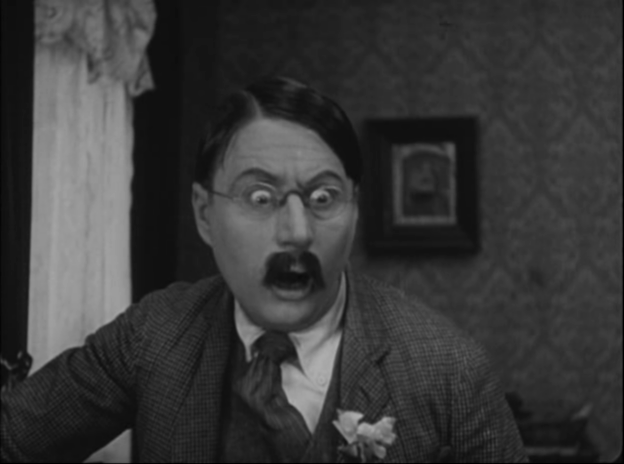
Syd gets quite stroppy when he can’t find his hat. Almost too aggressive for a comedy, especially when he’s been a milquetoast until now. A flash of the real man’s unpleasant side? Consternation as the cake/hat is sliced. It doesn’t behave correctly. A round of close-up reactions as the perfidy is discovered: like the denouement of a murder mystery.
The film’s best intertitle, perhaps, as Mrs. Syd asks “Where did you find it?” and a despondent Syd replies “They were eating it.”
The whole thing is incomprehensible to all concerned, though the solution and culprit, Dinky Dean Riesner, is right there, slapping his tiny palm on the creamy chapeau, then burying his face in it to slurp at the delicious coating.
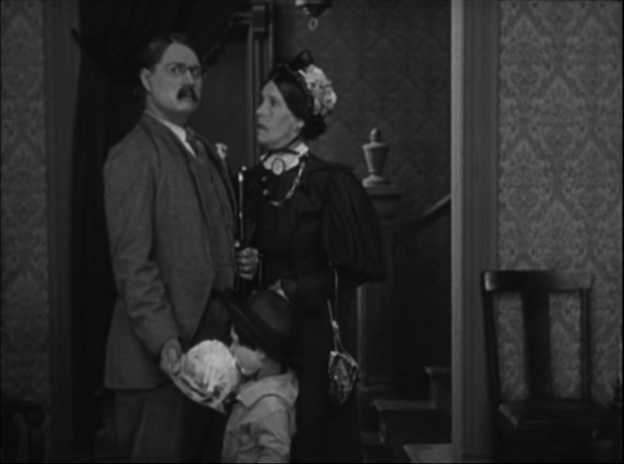
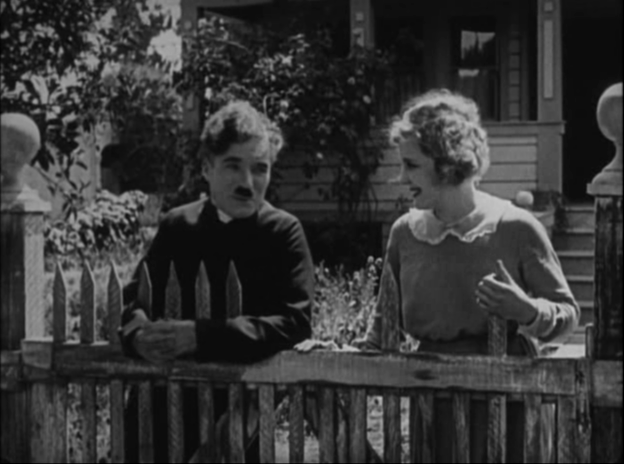
Romance in three-quarter backlight by the garden gate. Enter this Eden’s snake-in-the-grass, Charles Reisner as Howard Huntington AKA ‘Nitro Nick’ AKA ‘Picking Pete.’ Knowing Charlie from his past life, he’s evidently keen to get a piece of whatever long con is going on. Mack Swain, still at tea with Purviance and her mother, makes an obvious mark and is relieved of his pocketbook. Charlie looks very uncomfortable — this impostor is like the dark version of himself, down to the derby. He steals the pocketbook from Reisner and returns it to Swain. Using his powers of filching for good. But we can sense that Nitro Nick’s intrusion is making clear the untenability of Charlie AKA ‘Lefty Lombard’ AKA ‘Slippery Elm’ as a tenant in this respectable home.
When Picking Pete resteals the money, he’s too much on guard for Charlie to resteal it back, so Charlie goes into a magic routine — a prestidigitator in a world of legerdemain — magicking the pocketbook from Swain (who doesn’t have it) to Reisner (who does, having re-filched it). All done in plain view, so Reisner can’t make a fuss.
But now a cash MacGuffin appears (and Cash MacGuffin would make a fine character name for a crime thriller) — Edna’s mortgage money. Which Reisner spots and immediately makes plans for, spinning a yarn about missing his train so he’s invited to stay the night.

In THE TRAMP, the threat came from outside the house, with Charlie as besieged defender. With the threat INSIDE, the scenario is closer to bedroom farce, only with money rather than furtive sex and the veneer of respectability as the motive force. In THE ADVENTURER, Charlie was outsider who didn’t belong and his enemy, the great Eric Campbell, was an insider who did. The cops were the main adversary, though. Here, Reisner is a scarier villain because he really comes from a dark criminal world that Edna and her mum are wholly innocent of. Only Charlie, who knows that world as a native, can defend them. I’m excited to see where this goes.

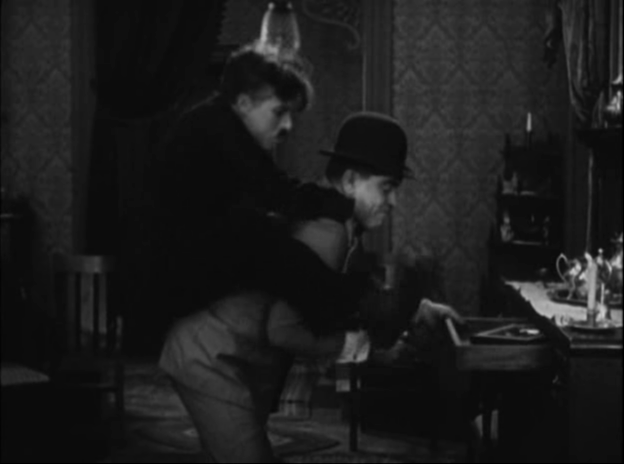
Really terrific long-take farce action on the top landing, with Charlie continually pretending to go into his room, catching Reisner leaving his, with none of the straight repetition Chaplin was so fond of — it’s all variations on the theme, not replays. Beautifully done, without a cut or a title.
Then a fight, with Reisner trying to get the swag from a drawer while Charlie, mounted on his back like the Old Man of the Sea, continually kicks the drawer shut. A beautiful gag I’ve never seen anywhere else, but which we get to see about a dozen times here since Chaplin has rightly decided that this one is worth repeating.
Knocking Charlie cold, Nitro Reisner heads to the local saloon to lose the mortgage money at roulette. This dance hall is the film’s first opportunity to inject actual Texan local colour.
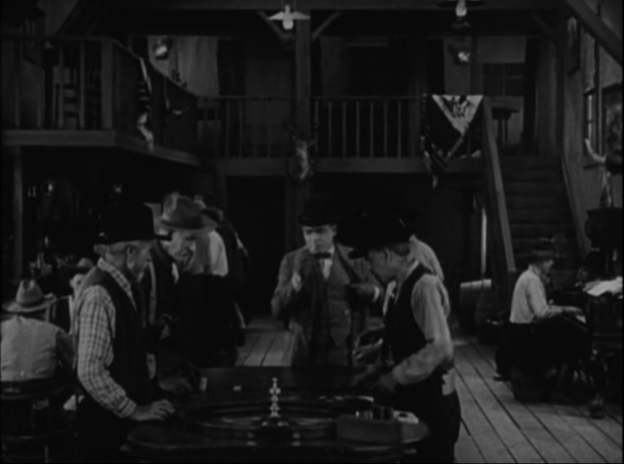

Rumbled! The sheriff (Tom Murray, who plays the villainous Black Larsen in THE GOLD RUSH) has discovered that Parson Pim is really Lefty Lombard, and gives Edna the bad news. This is pretty good third act plotting — Charlie can retrieve the money and still get arrested,so things really do look bleak. We may know that it’s inevitable that some kind of at least reasonably happyish ending must be arranged, but it’s not easy to see how, which sets Chaplin up nicely to delivery the necessary surprises, whatever they may be.
The plot thickens — a gang of bandits rob the saloon — pure deus ex machina, except that they’re not clearing up the plot problem, they’re intensifying and complicating it.
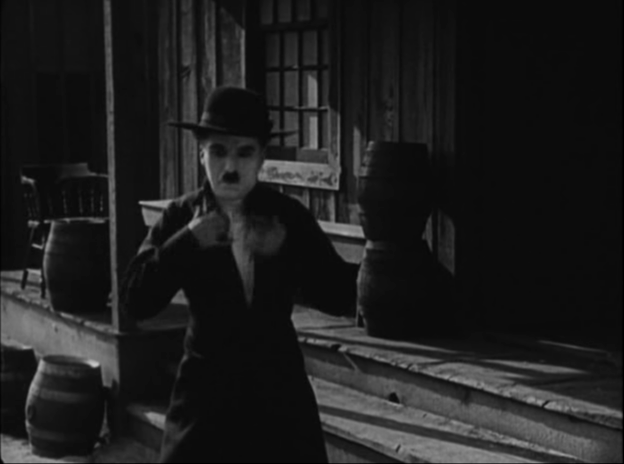
Chaplin deftly disguises himself to enter the saloon, reversing his dog collar — but I thought it was a real one, stolen from a real minister? It wouldn’t have regular wings at the back. Unless all dog collars do, so that the priests can pass among us incognito, which would be just like them, the sneaky bastards.
Impersonating a bandit, Charlie robs Nitro Nick, then flees, pursued by the real bandits. A pretty desperate bit of plot contrivance, I’ll admit.
Next morning, Charlie is able to return the loot to Edna, but is nailed by the law. His innocence of the current crime counts for nothing since he’s a fugitive from justice anyway. But the goodhearted Sheriff walks Charlie to the Mexican border and orders him to pick flowers — from the other side. It’s the same idea as the jailbreak in THE MIRACLE OF MORGAN’S CREEK (and we know Sturges was a Chaplin fan) — will Charlie be sharper than Norville Barnes in realising he’s being allowed to escape?
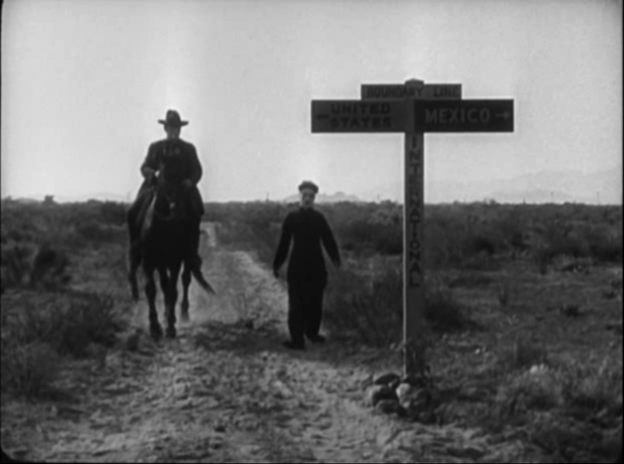

Nope! Charlie is crafty but nothing in his experience of the law has enabled him to expect this. He comes running back with the flowers even as the Sheriff is riding off, and the stalwart lawman has to march him back to the border by his dog collar, delivering the most well-intentioned boot up the arse in the Chaplin oeuvre, propelling him to freedom. Charlie stands in a wide prairie longshot and looks at us in surprise.
But Chaplin’s not done with us. Just as Charlie is celebrating his new life in peaceful Mexico, a bunch of bandits emerge from the bushes, murdering each other. he flees back to the border, and then retreats from the camera, keeping on big, outward-pointing shoe on either side of the boundary line, ready to flee in whichever direction becomes advisable. It’s a precarious existence for a “citizen of the world.”

